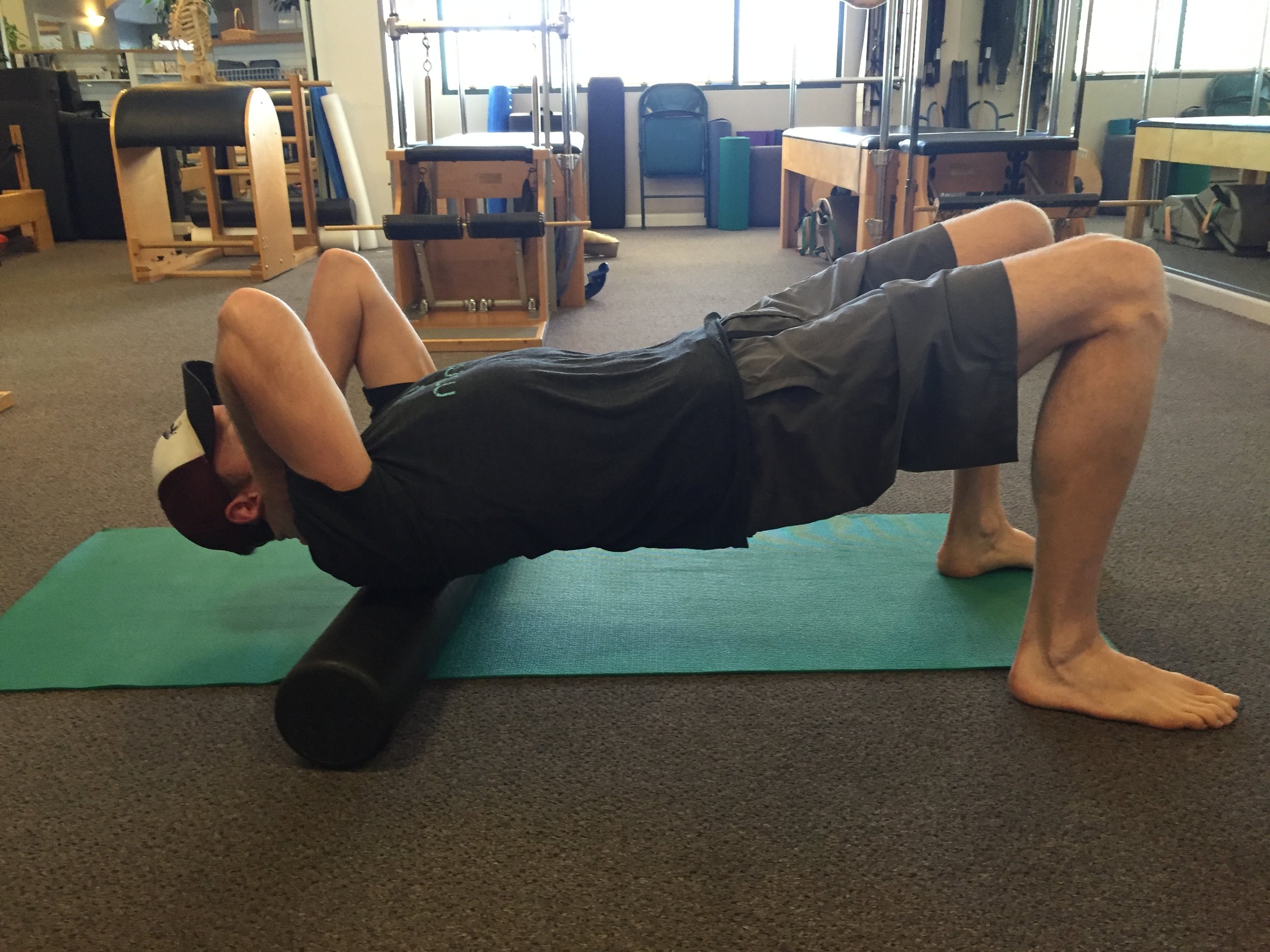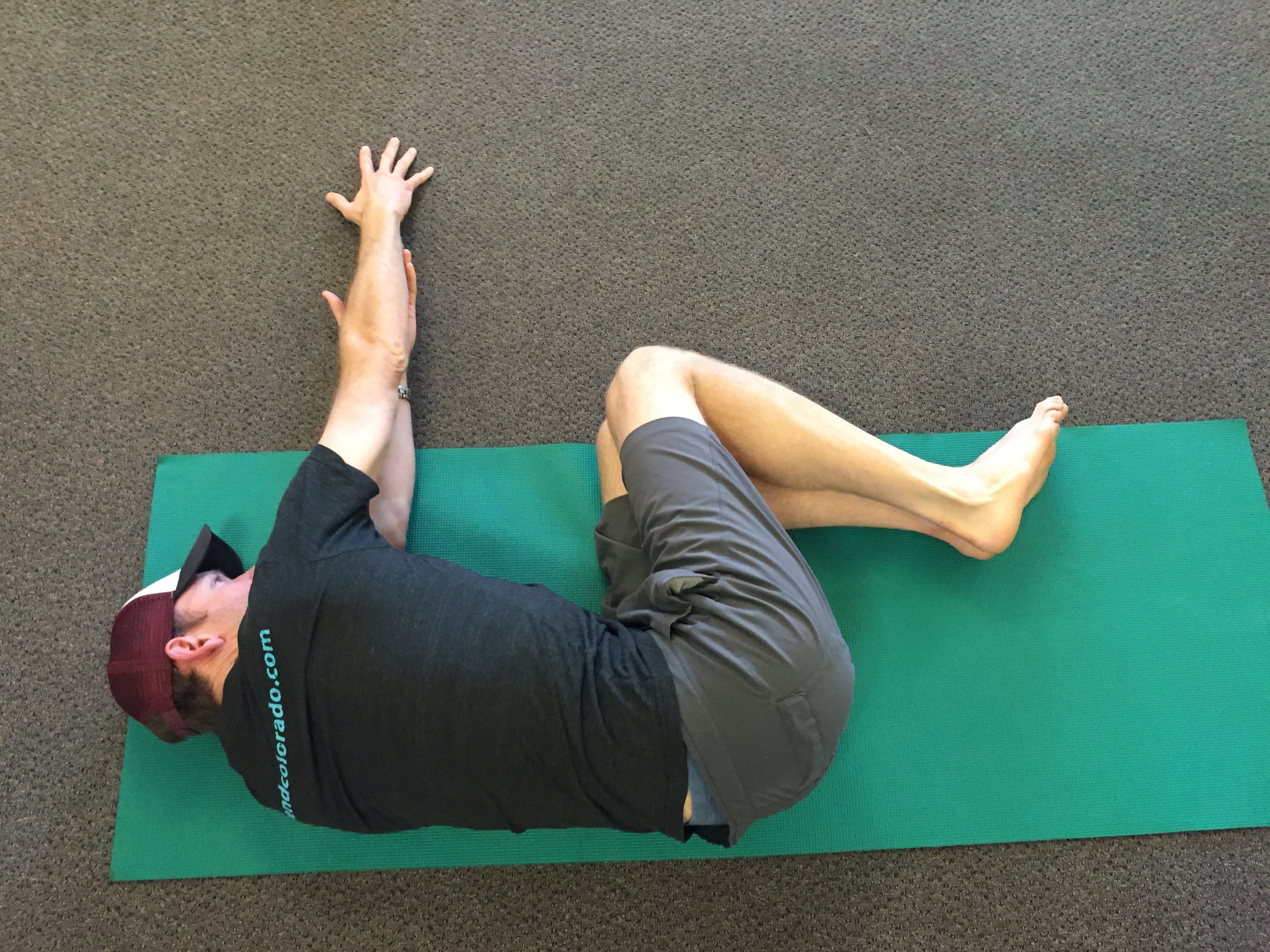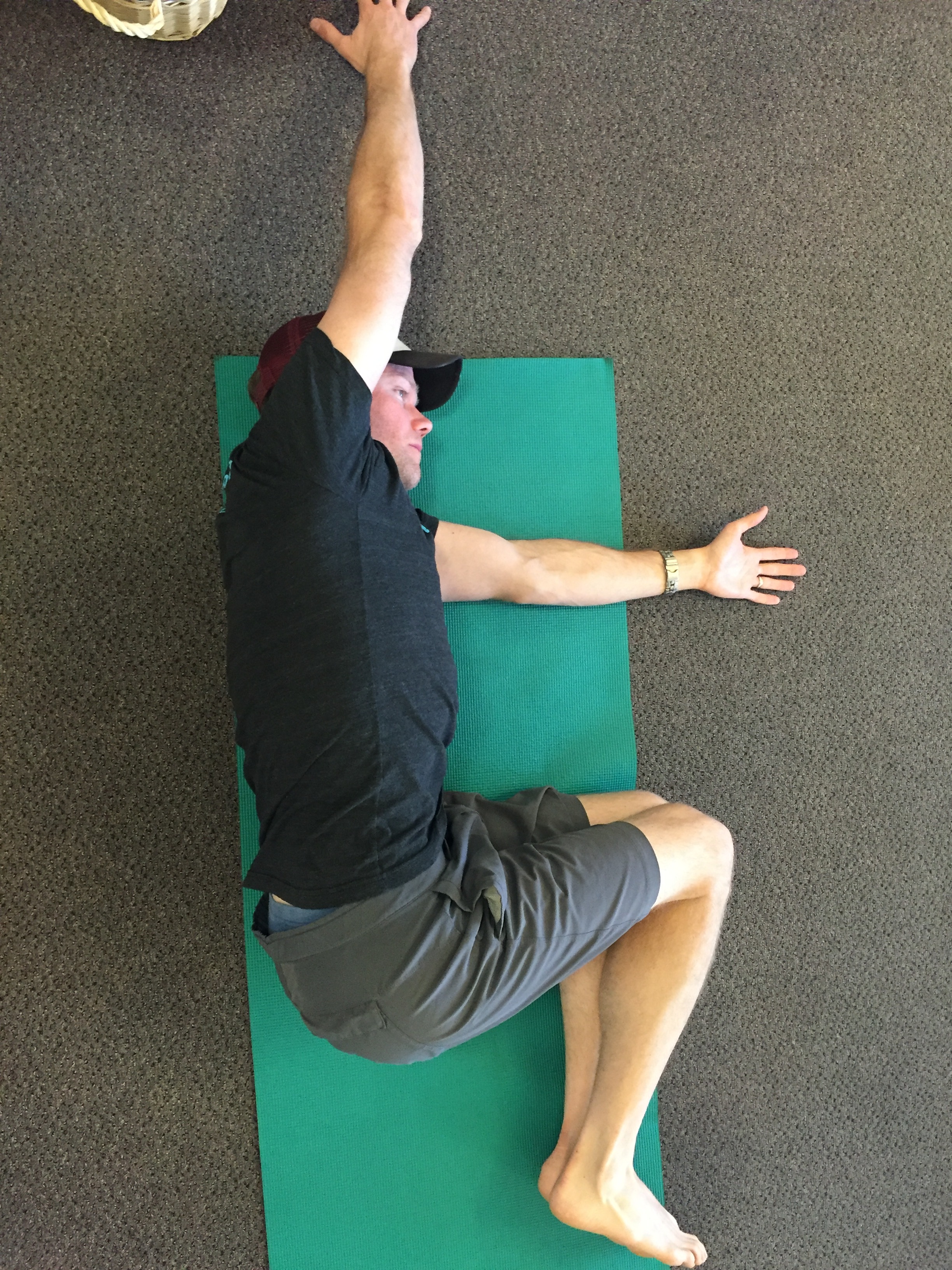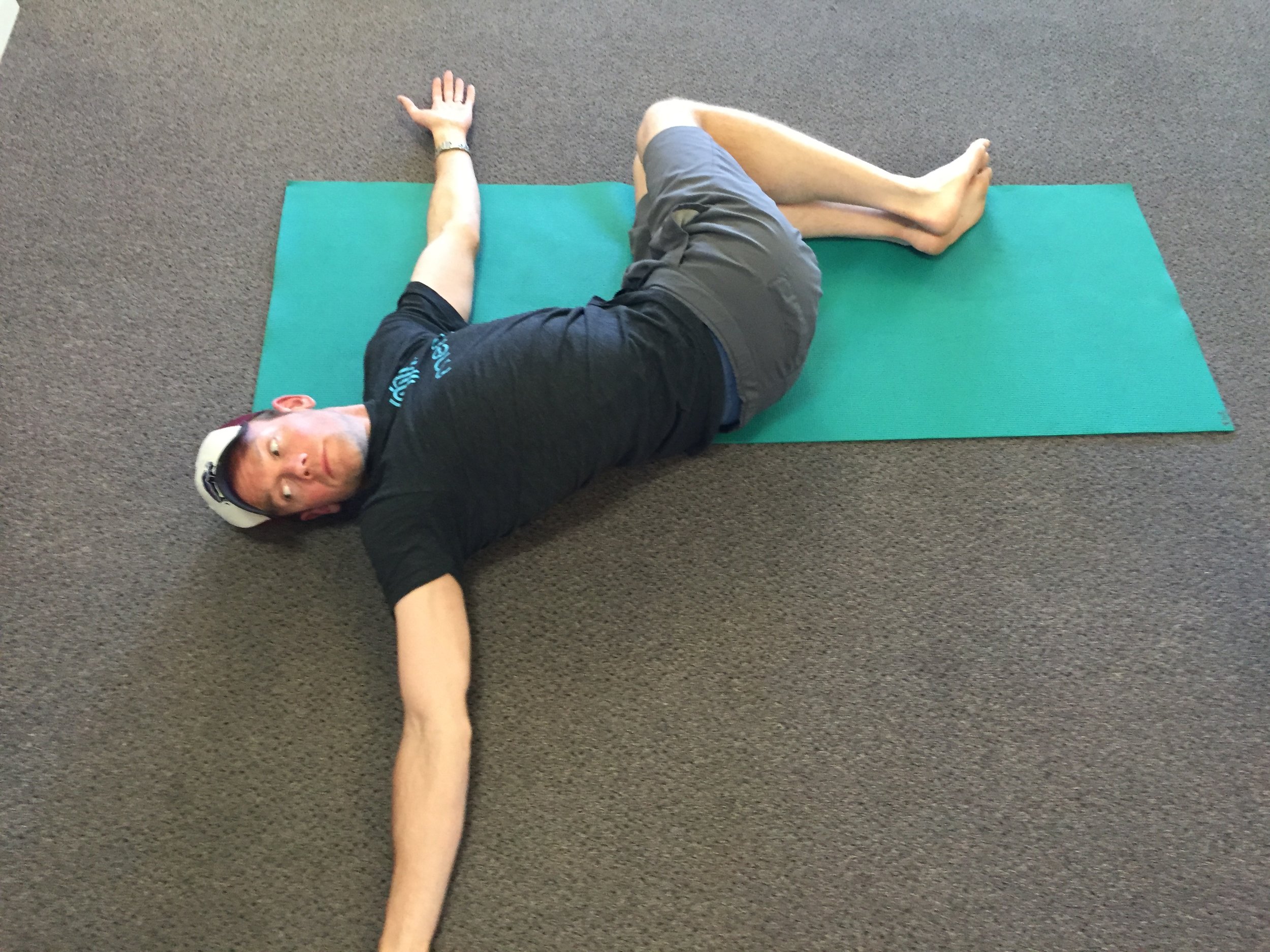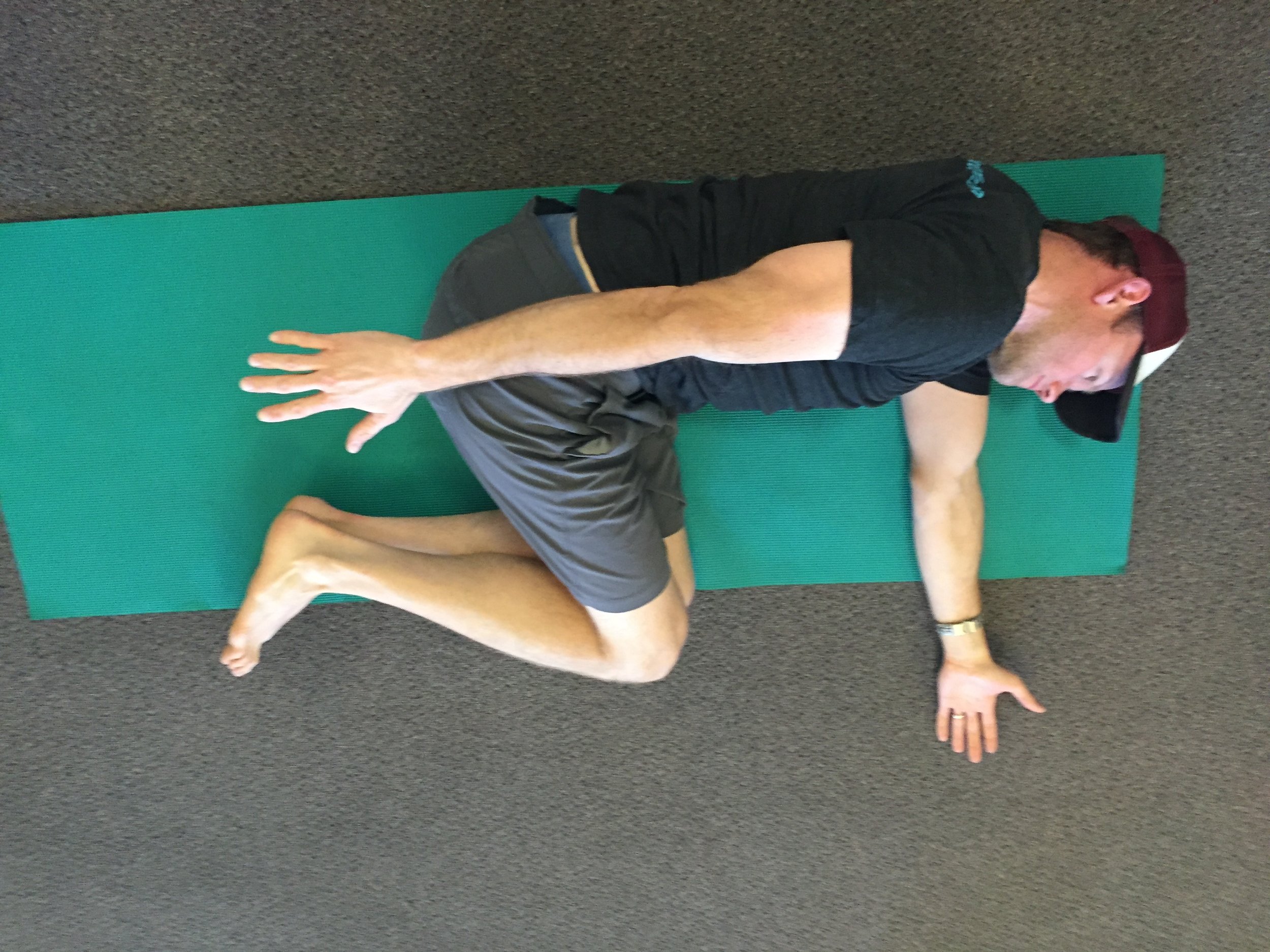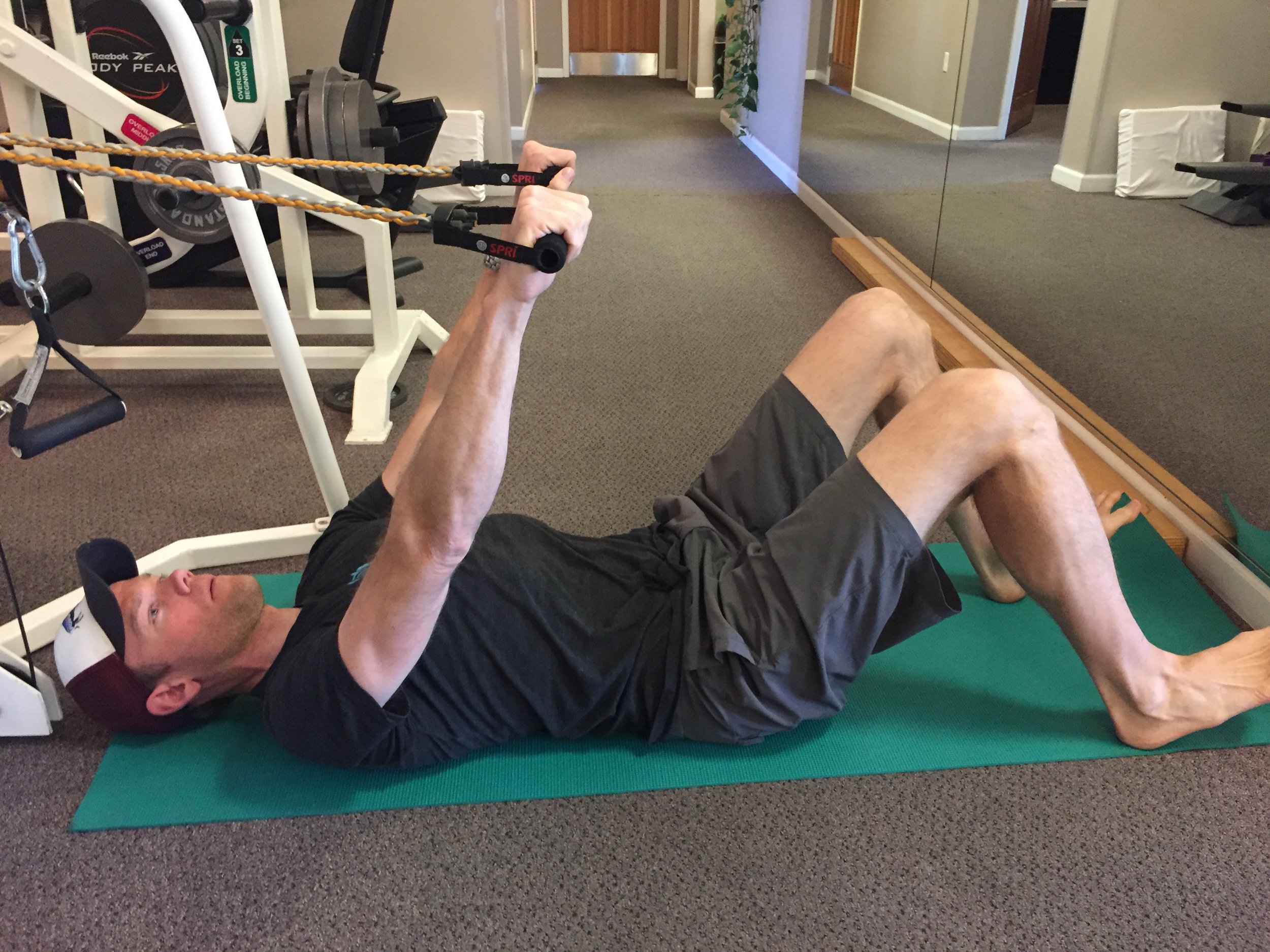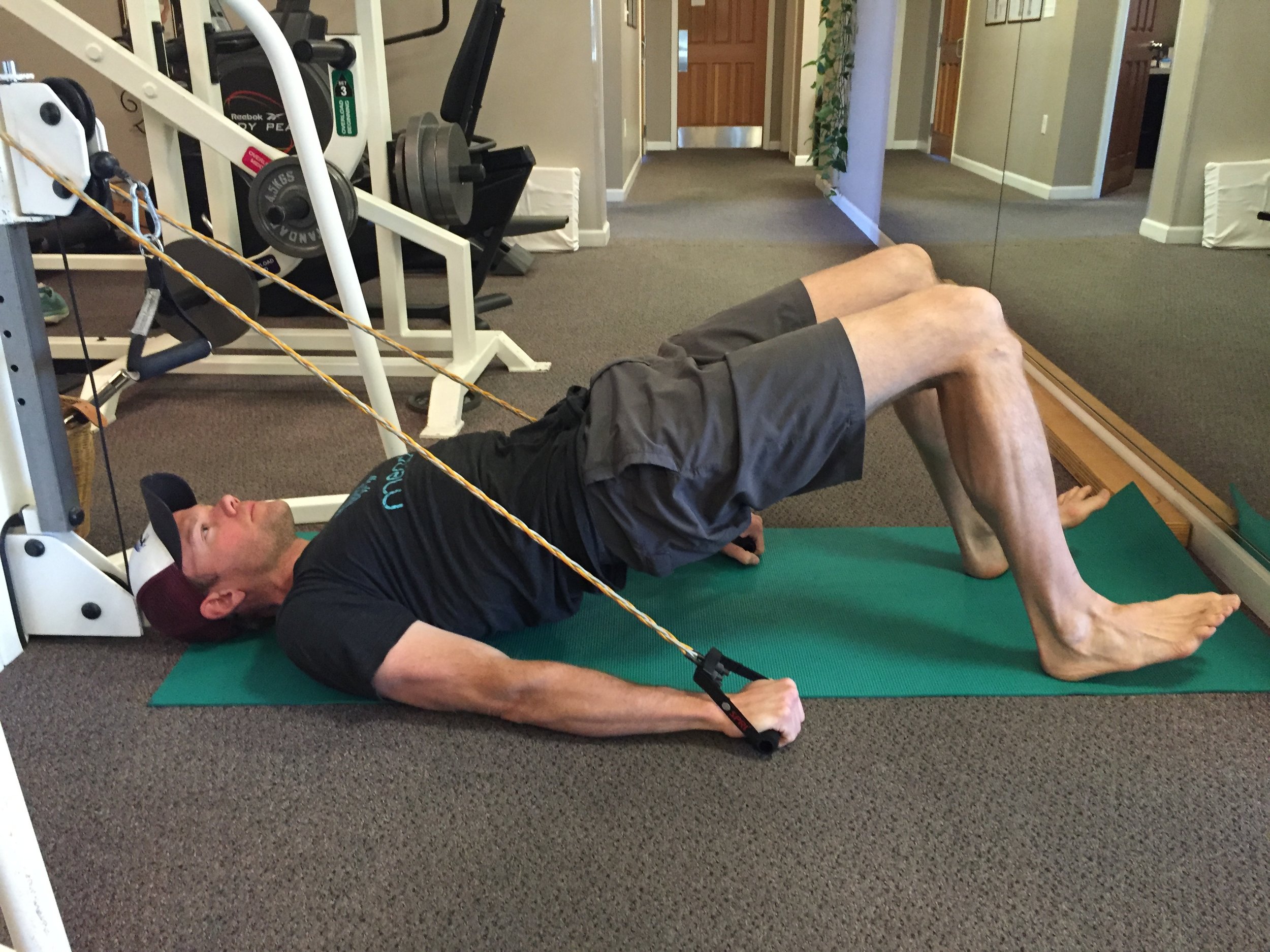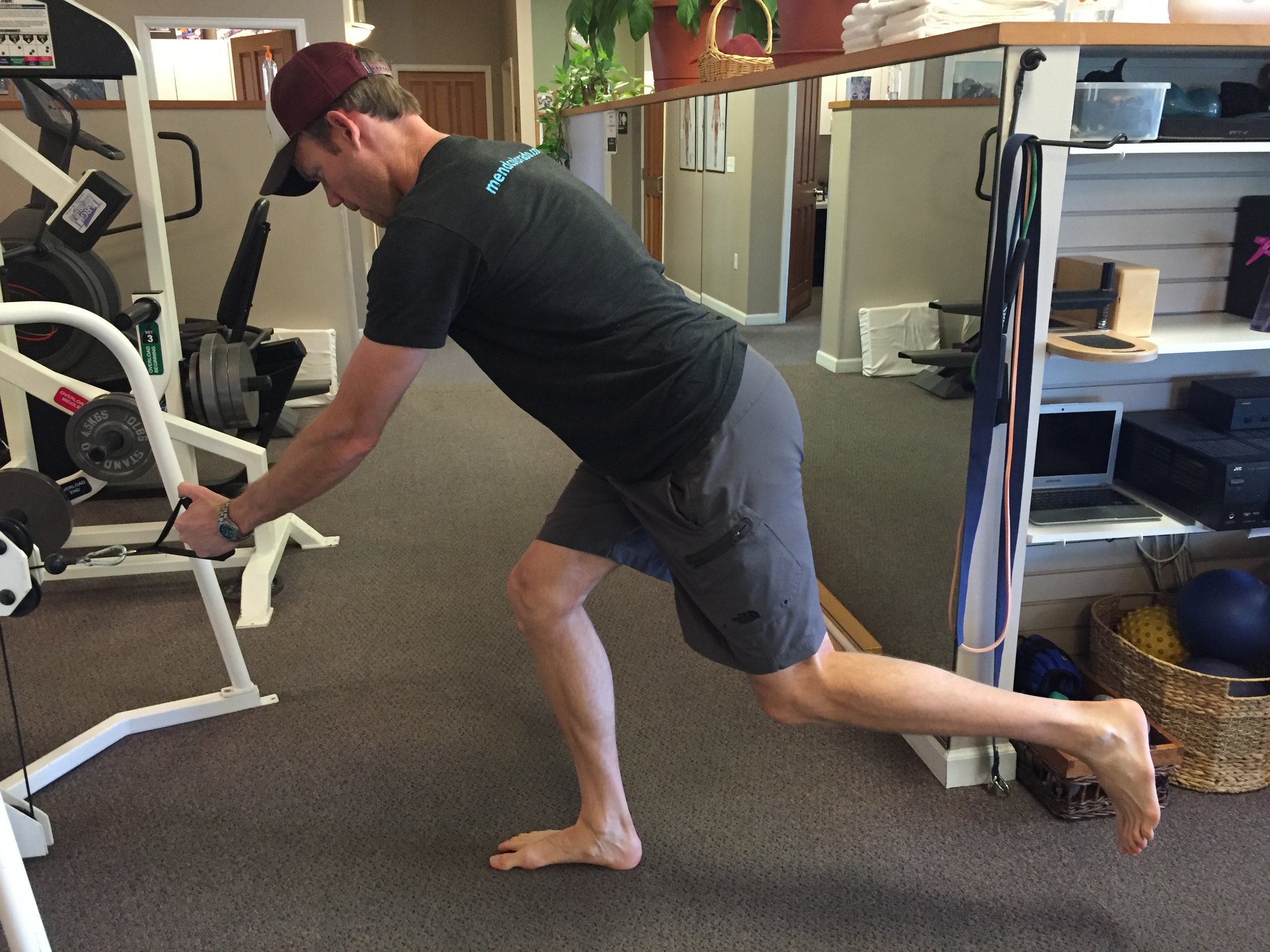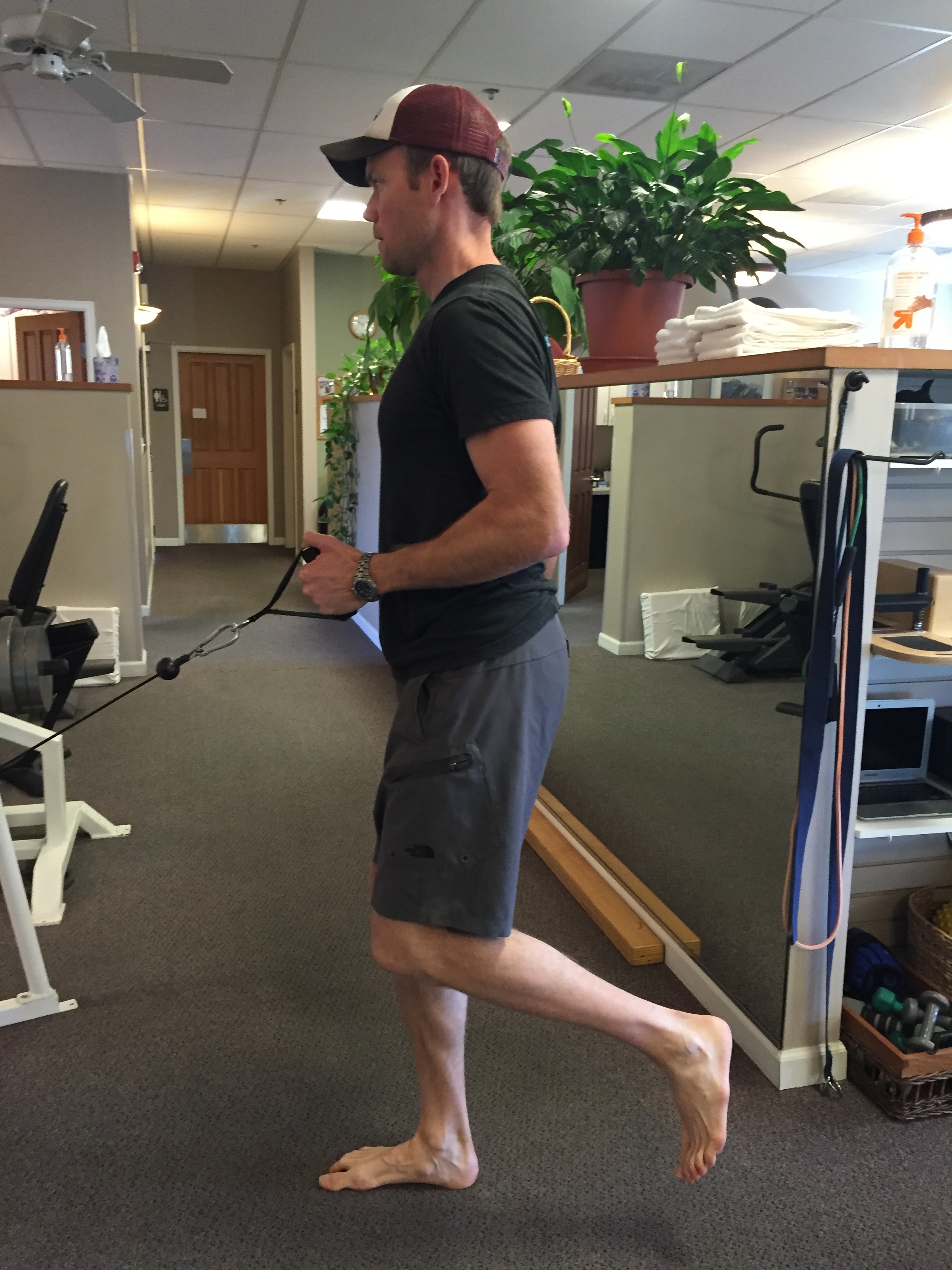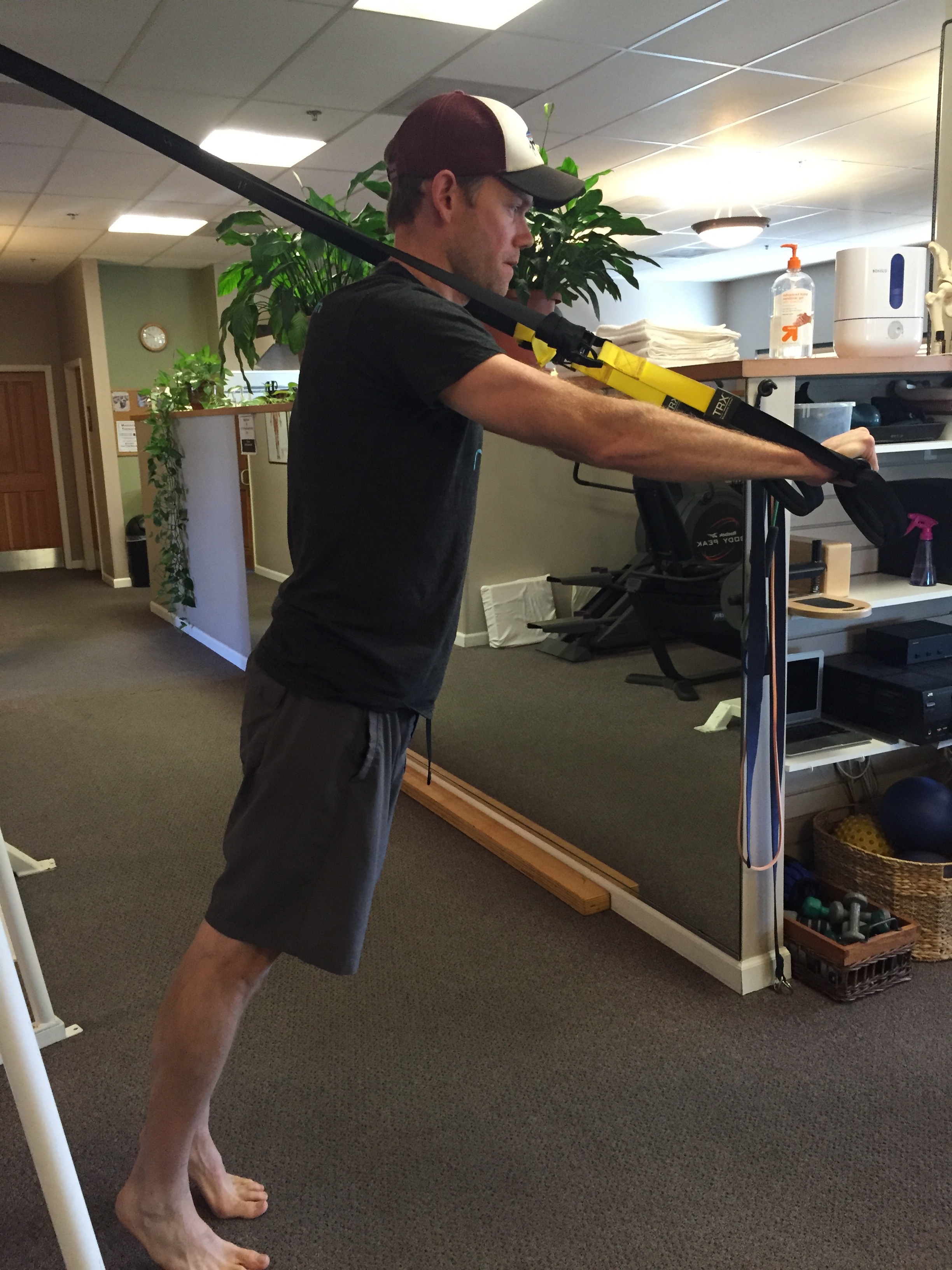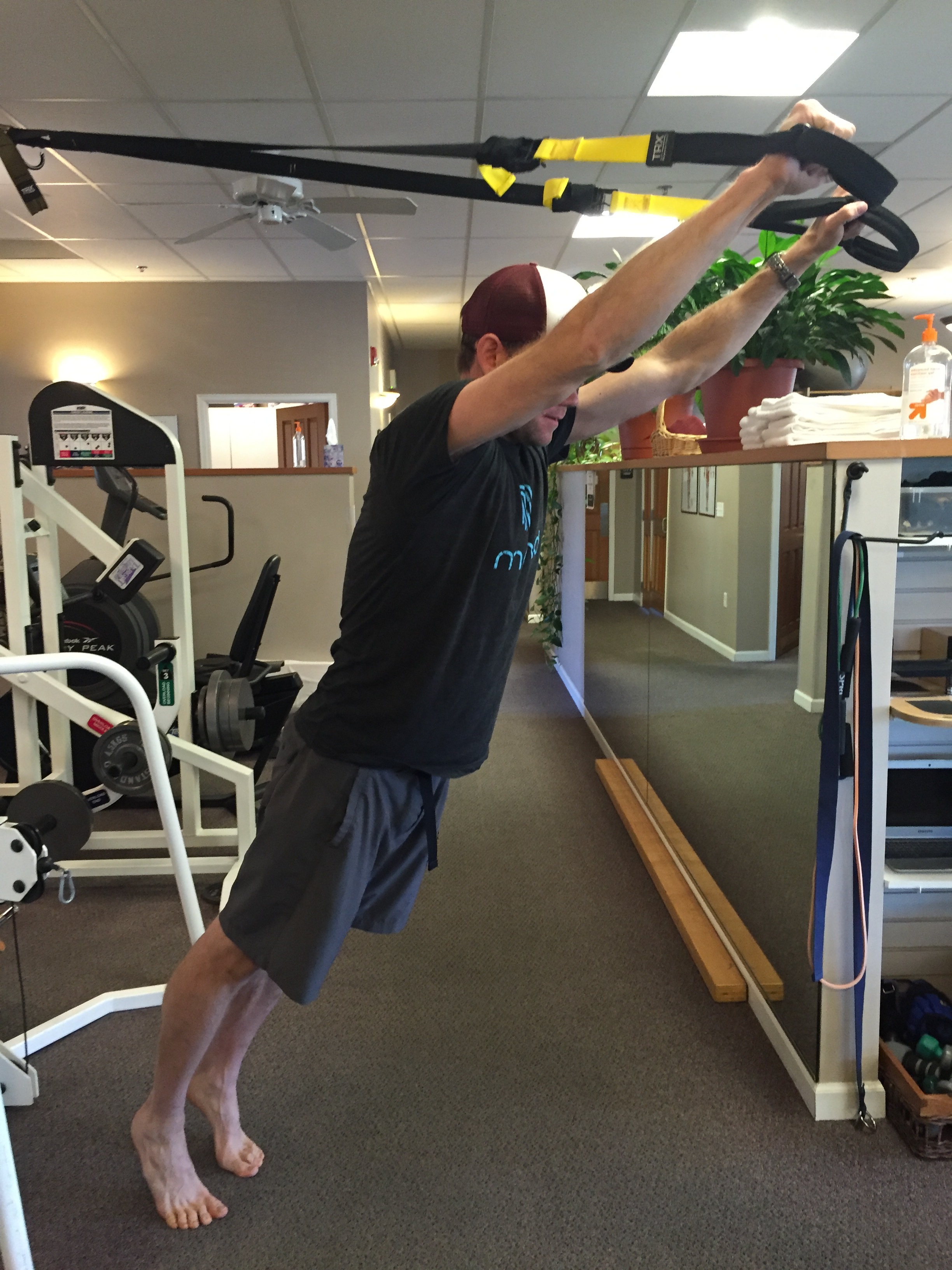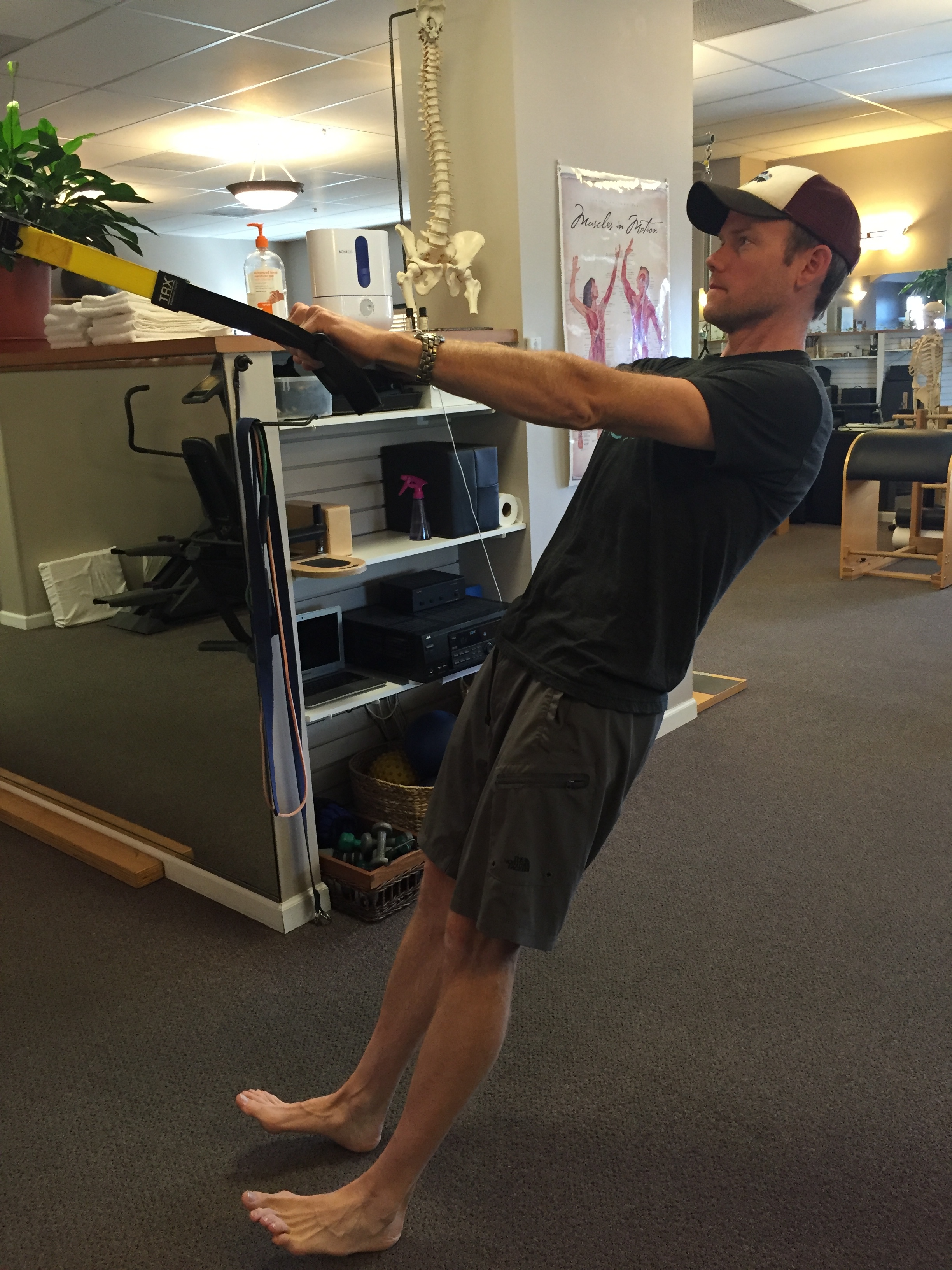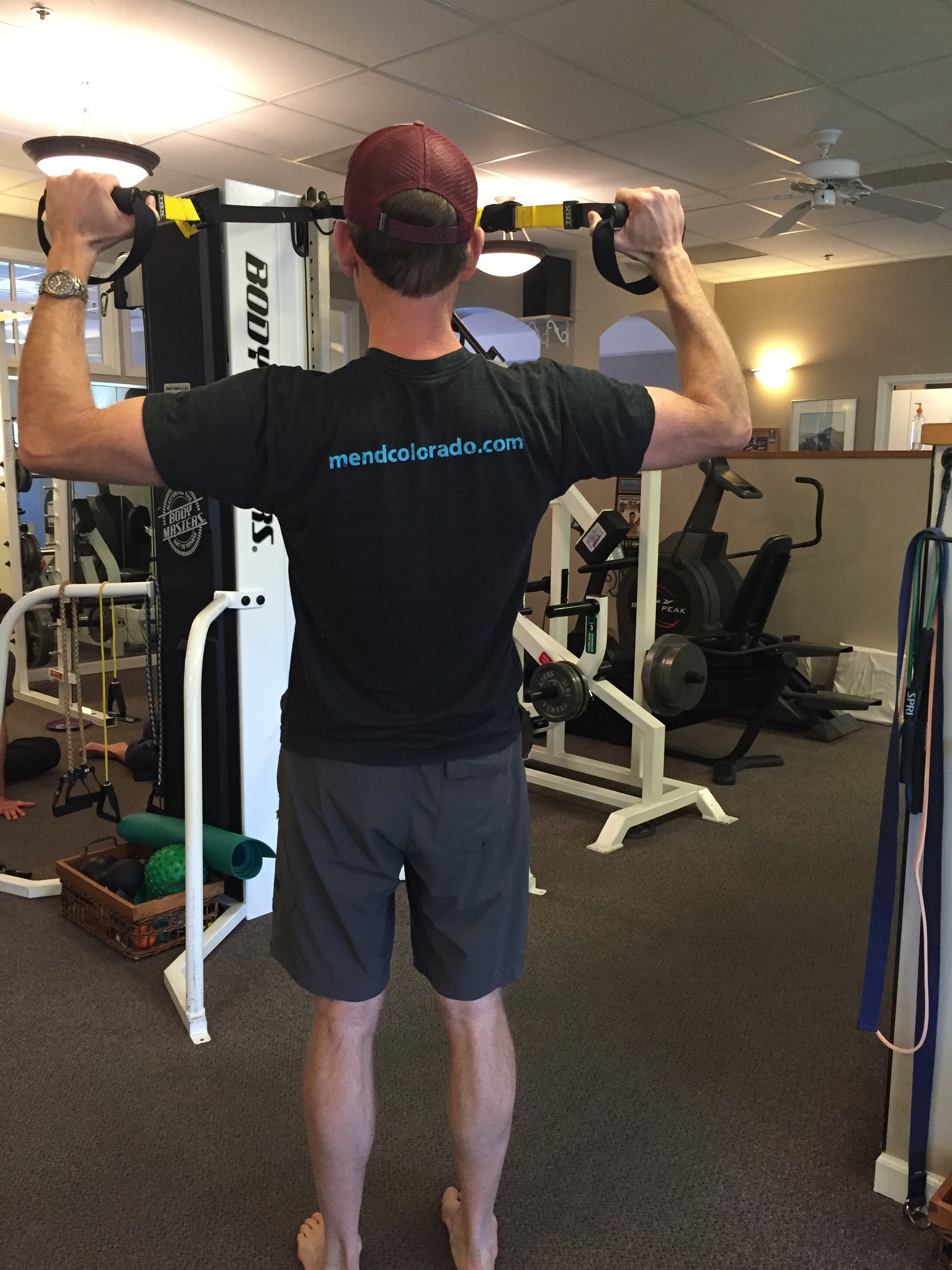In our Boulder Physical Therapy practice we often see athletes who are dealing with a swimming related injury. Some of these injuries can occur from training errors and poor stroke mechanics, but many are secondary to correctable changes in mobility and strength. Many injured swimmers complain of shoulder pain including rotator cuff muscle or tendon pain, impingement, and osteoarthritis. While the causes of these symptoms are usually multifactorial they can general be placed into two categories: thoracic mobility and weakness.
It is rare to find a swimmer with adequate thoracic mobility, including both thoracic extension and rotation, required for each of the 4 strokes. This loss of mobility leads to poor swimming mechanics and can overload the shoulder joint. If the thoracic spine is not driving the arm movement, the total load is now placed onto the shoulder and arm. Another common impairment we find in our practice is a loss of hip strength. The majority of a swimmer’s power is driven by their legs and without adequate strength in the hips the shoulders and upper body alone are asked to produce the forces necessary for propulsion through the water. Decreased thoracic flexibility and hip and shoulder weakness are preventable impairments in swimming athletes. The exercises below are designed to address these impairments to both reduce an athlete’s injury risk as well as improve their swimming performance.
Readers are advised to speak with a medical professional before initiating any exercise program.
Thoracic Foam Rolling – Support your neck and head with your hands and slowly roll through your thoracic spine (mid back) from approximately your shirt tag to the bottom of your shoulder blades. Do not fulcrum over the foam roller but rather keep your spine parallel to the floor.
1-2 minutes before activity
Shoulder Circles – lay on your side with your hips flexed to 90 degrees and both arms outstretched in front of you. Initiate the movement through the middle back extending your top hand over your bottom hand and begin to move counterclockwise keeping your finger tips in contact with the floor. The movement should come from the middle back and the shoulder should mainly come around for the ride. Work both clockwise and counter clockwise on each shoulder
5 reps clockwise and 5 reps counterclockwise on each side.
Bridge with shoulder extension – lay on your back, holding a resistance band safely and properly secured. Lift your pelvis and hips using your glut muscles as you extend your shoulders pulling your hands toward the floor. Keep your chin slightly tucked and your shoulder blades down and back.
Perform 2 sets of 12-15 reps. 2-3 non consecutive days per week
Low Pulley Row and Deadlift – Stand on one foot holding a low cable pulley in opposite hand. Hinge forward at your hip with a straight spine to begin. Extend your hip and knee to standing as you draw the handle towards your chest. Keep your spine straight, shoulder blade down and back, and knee over foot.
Perform 2 sets of 12-15 reps. 2-3 non consecutive days per week
Suspension Shoulder Flexion – Stand holding safely secured TRX or suspension trainer handles at shoulder height. Slowly lower your body by raising your arms over head. Keep your core muscles tight, utilize a neutral spine, and slowly lower back to start.
Perform 2 sets of 12-15 reps. 2-3 non consecutive days per week
TRX high row with shoulder external rotation – Grasp safely secured TRX or suspension trainer handles at shoulder height. Draw the handles toward you in a rowing motion then transition into shoulder external rotation rotating your palms from facing the floor into facing forward. Slowly return to start. Keep a neutral spine, shoulder blades down and back, and your core engaged.

